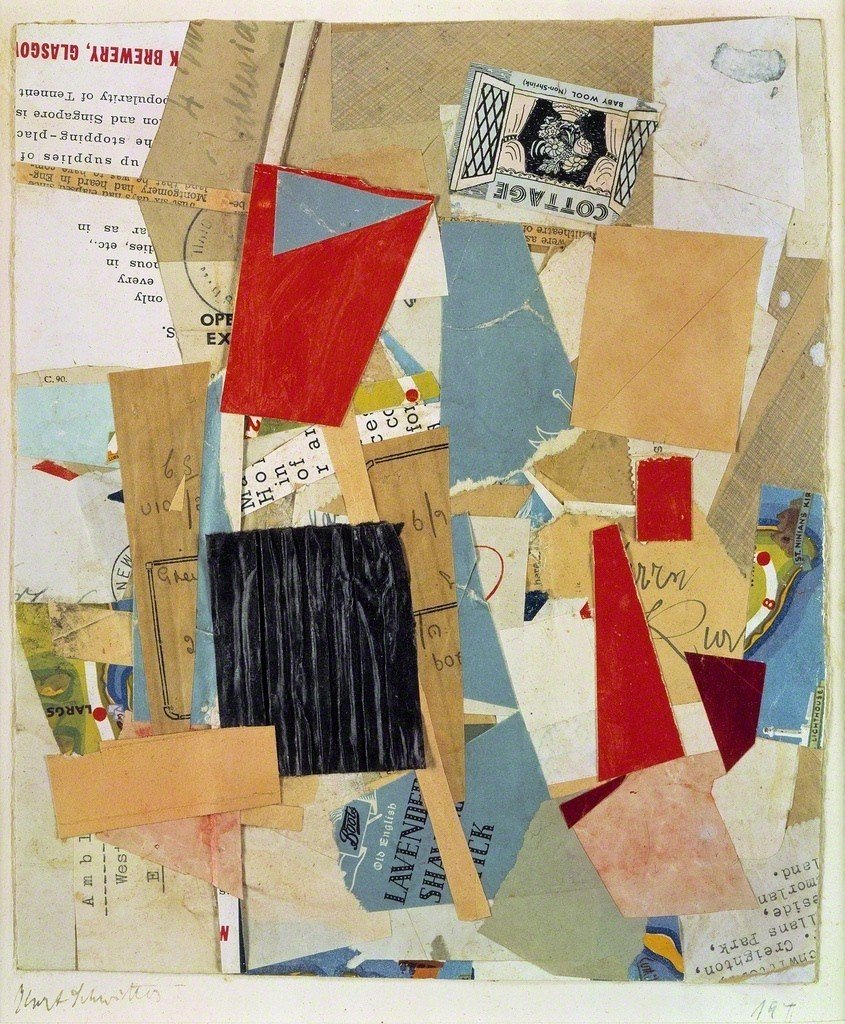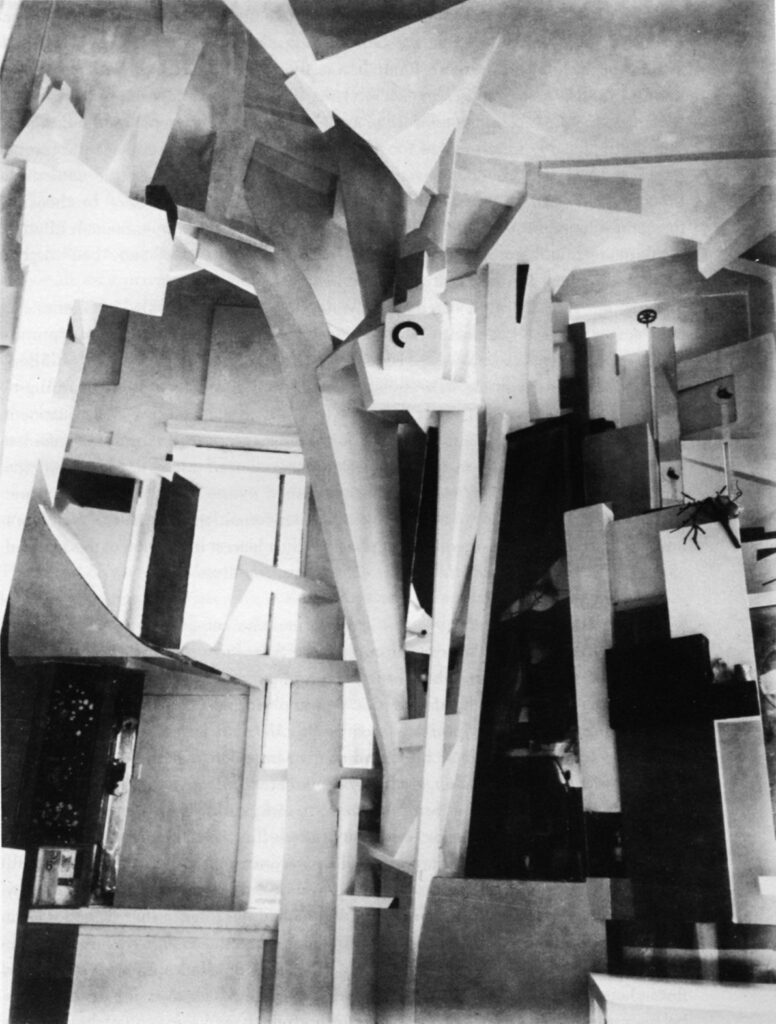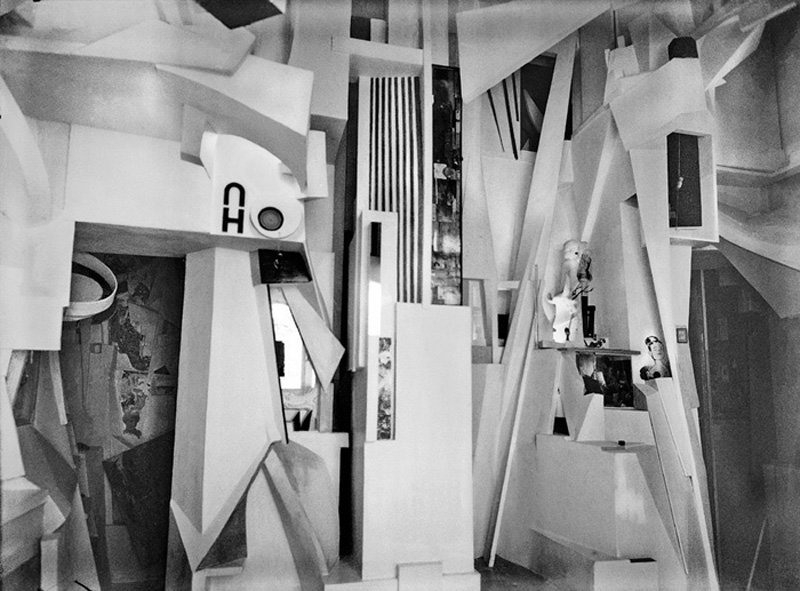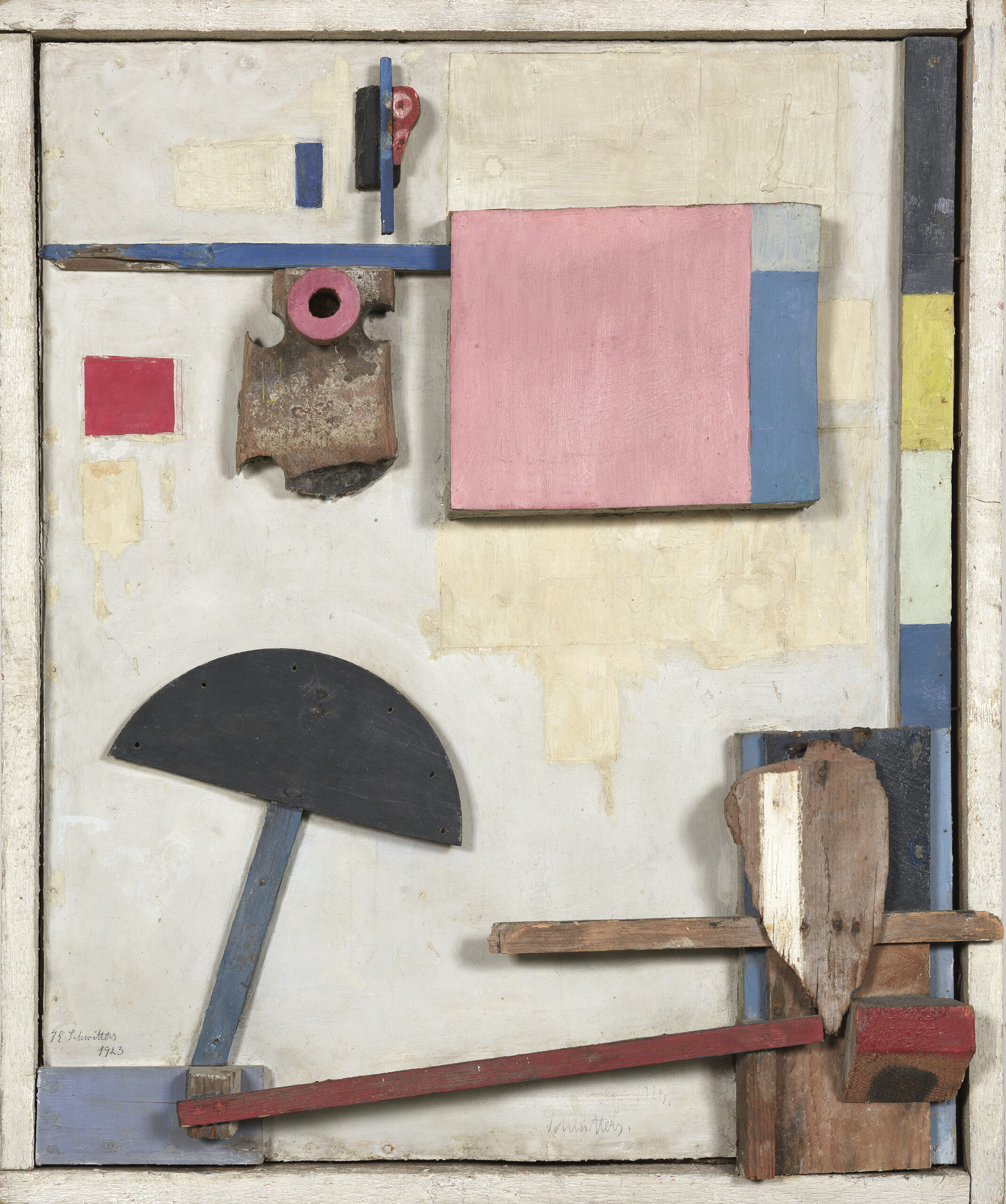For those who don’t know the history of reuse that becomes art and the life of this artist, representing also one of the most interesting episodes of art that took place almost 100 years ago, here is a short summary. Going backwards, without tracing high tech tools and productions (the famous high technology of our days) we just need to browse a bit in the history of art; to give evidence of the fact that reuse is a subject known already at the beginning of 1900.
Kurt Schwitters is one of the most important figures of Dadaism – which then actually never officially belonged to the Berlin group of Dadaists – (remember that Dadaism is an artistic movement, which was born after the First World War, an art that wants to give scandal by rejecting the traditional methods).
Schwitters born in 1887 began his training in Dresden, Germany, walking initially between the streets of Expressionism (which was the free art – exasperation of shapes and colors) and Cubism (works with objects not very recognizable, Picasso is the protagonist) at the beginning created some works not very successful. Collages with objects already used as streetcar tickets, caps, sponges and buttons.

Who was Kurt?
An eccentric character, considering the ideas he had and then realized.
He rode his bike and went around the streets collecting items of all materials, shapes, and sizes: industrial waste, garbage, corroded wooden planks, and discarded items.
“you can shout out the garbage at home, too. And that’s what I did, gluing and nailing them together.” Hence the reuse that becomes art, with one of his most famous works: Merzbau! A sort of assemblage, a composition of objects or components of the objects themselves, which he built in his own home.
A similar technique to the poly-material collages of the Cubists. But considering various aspects, the assemblage technique is the one that comes closest to the artist; thus managing to unite two languages in a single gesture.

What was the purpose of his work?
His purpose was to make a withdrawal, a small part of all the reality around him. The “leftovers” of a world that was heading towards industrialization; converting these objects into psychic and sensory resources, to convert them back into pleasure.
Collecting all that was left or what had become the discarded goods of the society of his time, making it a work of representation of the ugly and corroded. It appears an ultra-contemporary revolution. An artist who reuses waste by making it a work of art?
You may also be interested in The spectacular art of Theo Jansen.
Today we could see this work with different eyes. Right now, in a historical period in which the word reuse is perhaps one of the most important and part of our daily lives. Using only these “found objects” and without any waste of resources – quite the opposite – he managed to create unique works.

But if we go back to the beginning of the 20th century, a period characterized by strong changes, new artistic experimentations, with “new looks” turned to the future and together with the art world in full ferment, we see that the artist together with his colleagues will be able to revolutionize the traditional codes and influence the age of time, which still remains today.
The work was created in several rooms of the family home in Hanover, Waldhausenstrasse No. 5, a long journey that ended before World War II in 1937.
Of this work remains only a photo and a reproduction at the Tate Modern of London.





